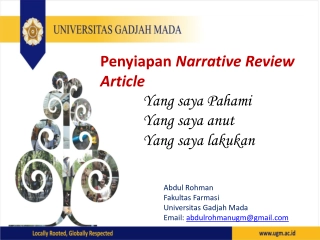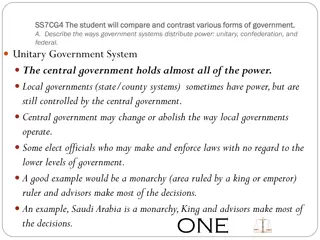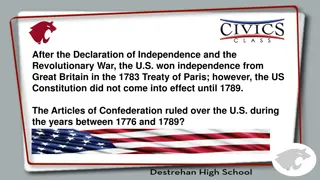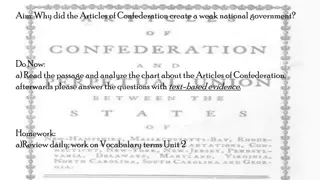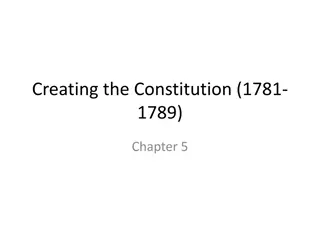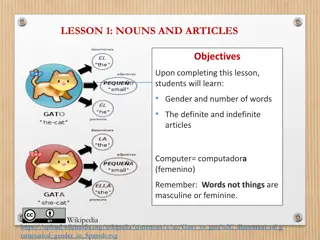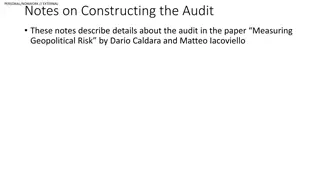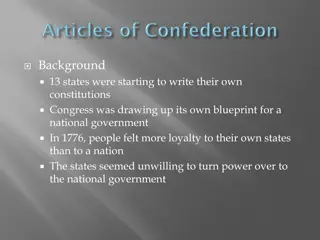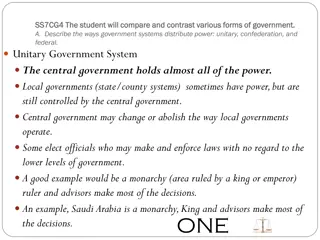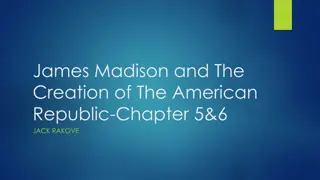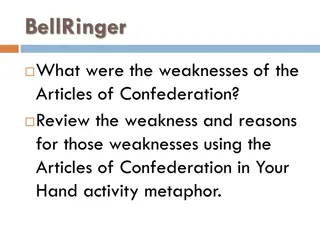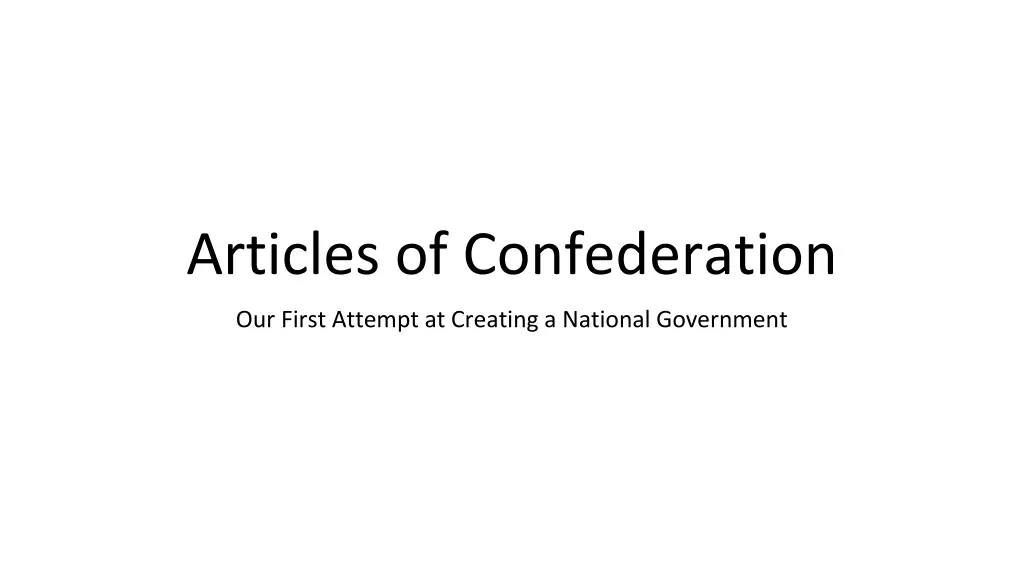
Articles of Confederation: Our First Attempt at National Government
Explore the Articles of Confederation, America's initial national government structure, weaknesses, and achievements. Discover the factors that promoted unity among the thirteen colonies and those that hindered it, leading to the critical period of 1781-1789. Learn about the League of Friendship, the lack of legislative power, and why the Articles ultimately failed, including economic pressures post-war.
Download Presentation

Please find below an Image/Link to download the presentation.
The content on the website is provided AS IS for your information and personal use only. It may not be sold, licensed, or shared on other websites without obtaining consent from the author. If you encounter any issues during the download, it is possible that the publisher has removed the file from their server.
You are allowed to download the files provided on this website for personal or commercial use, subject to the condition that they are used lawfully. All files are the property of their respective owners.
The content on the website is provided AS IS for your information and personal use only. It may not be sold, licensed, or shared on other websites without obtaining consent from the author.
E N D
Presentation Transcript
Articles of Confederation Our First Attempt at Creating a National Government
Thirteen Colonies or Are We One Nation? Factors Encouraging Unity of Colonies: 1. common English language\culture 2. single geographic unit 3. no traditional hostility against one another 4. cooperated in common effort to win independence from:
One Nation or Thirteen continues. Factors against Unity: 1. strong loyalties to their individual states 2. large area with poor roads and inadequate transportation to communicate 3. not interdependent economically, traded more with West Indies and Europe 4. no common enemy to unite against ** (1781-1789) U.S. underwent what many historians call a Critical Period
League of Friendship 1777 - Articles of Confederation proposed by the Continental Congress 1781 ratified and the Articles established a National Government Each state retained its sovereignty, freedom, and independence. (State Constitutions more important) A firm league of friendship between the colonies with a weak central govt.
Weaknesses of the A of C 1. Central Govt. Congress a one-house legislature (unicameral) - delegates from 13 states each casting one vote 2. No chief executive to enforce the laws WHY??? 3. No national courts for disputes between citizens of different states, state courts only 4. Congress needed a 9/13 vote to enact laws (rarely were there more than 10 states present at one time) 5. amendments needed unanimous vote
Weaknesses ContinueLack of Legislative Power 1. No national taxes instead request funds from states 2. Government and states can issue money 3. No national army instead state militias 4. Could not control foreign and domestic trade 5. Lacked respect and effectiveness with foreign leaders
Achievements Under the A of C 1. Pleased small farmers, frontier settlers, and city workers (Weak govt. didn t threaten their rights and liberties) 2. Ended the Revolutionary War 3. Achieved the Treaty of Paris (1783) 4. Kept states united in name if not always in fact 5. Passed the Land Ordinance of 1785 6. Passed the Northwest Ordinance of 1787
WHY DOES IT FAIL??? Economic Factors US in debt for over $50 million after the war! Weak Central Government Nationalist group forms speaking out against a weak central government (Washington, Madison and Hamilton) America as a Model Country are we headed to political violence Annapolis Convention Fix economic problems very few states showed but they all agreed for the need to meet again!!!

